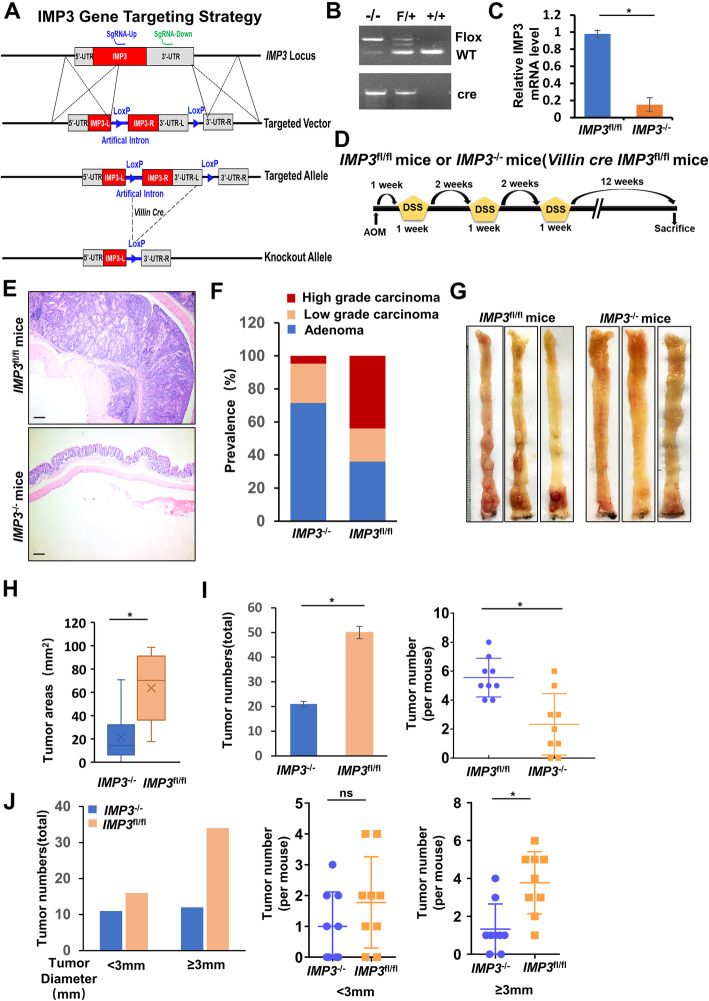Fig. 2.
Colon-specific knockout of IMP3 decreased AOM/DSS induced colon carcinogenesis. (A) Scheme of Villin-Cre-mediated recombination of IMP3 floxed allele. (B) PCR amplification of genomic DNA. Villin-Cre IMP3−/− colon shows a 666 base pair band specific to recombination allele. (C) The quantitative real-time RT-PCR analysis of Villin-Cre IMP3−/−colon tissues shows an approximately 90% decrease of IMP3 mRNA levels compared with the IMP3fl/fl colon tissues. (D) Six- to 8-week-old IMP3fl/fl (n = 9) and Villin-Cre IMP3−/−mice (n = 9) were subjected to a single intraperitoneal injection of AOM (10 mg/kg/body weight) followed by 3 cycles of 1 week of administration of 2.5% DSS in the drinking water, each cycle separated by a 2-week period. Mice were killed at 12 weeks after AOM/DSS exposure. (E) HE staining of representative colon tissue image of Villin-Cre IMP3−/− and IMP3fl/fl mice. (F) Prevalence of low-grade adenomas, highgrade adenomas, and adenocarcinomas of Villin-Cre IMP3−/− and IMP3fl/fl mice. (G) Macroscopic finding of Villin-Cre IMP3−/− and IMP3fl/fl mouse colons. (H)Tumor areas, Villin-Cre IMP3−/− mice showed a significant reduction in the total tumor areas compared with IMP3fl/fl mice. (I) Tumor numbers, Villin-Cre IMP3−/− mice showed a significant reduction in the total tumor numbers(left) and per mouse tumor number(right) compared with IMP3fl/fl mice. (J) Villin-Cre IMP3−/− mouse colons showed a decreased total tumor numbers or per mouse tumor numbers in which the diameter was larger than 3.0 mm, while no significant difference was found in tumor diameter was smaller than 3.0 mm

